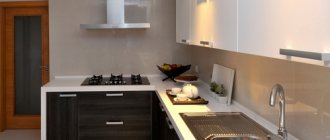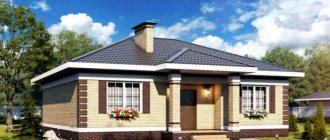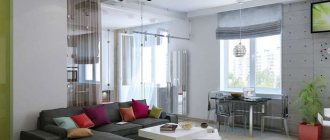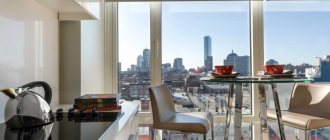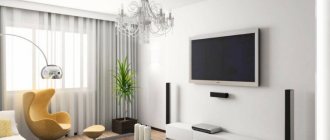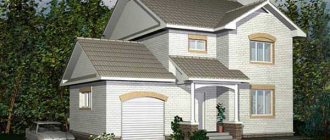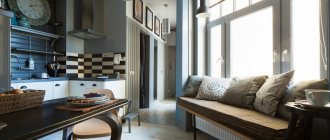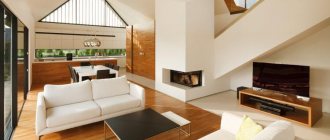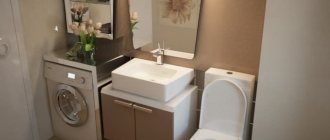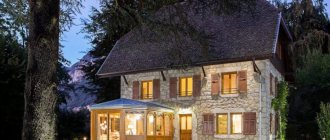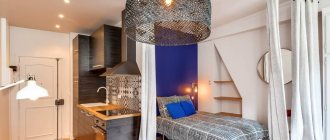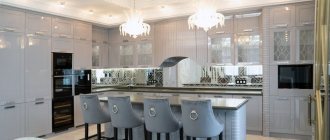Today, the technology of frame houses in Moscow is becoming increasingly popular. They are built not only as dachas, but also used for permanent residence. If initially such buildings were built according to a standard project that did not provide for expansion, today there are projects of frame-modular houses, the design of which initially included the ability to complete the construction of 1-2 modules. Buying a growing house is much more profitable than buying an ordinary one and then trying to finish it.
But first, let's define the terms:
This is important because designers, builders, estimators, and engineers use these terms. And in the process of communicating under the same name, you must mean the same thing!
total area
The total area of a residential building consists of the sum of the areas of all premises, including premises for auxiliary use, with the exception of balconies, loggias, verandas and terraces. (here I would like to note that when calculating the cost, you need to take into account the costs of large terraces and loggias, which are approximately ½ of the cost of constructing a warm room of a similar area).
The calculation does not take into account: basements and crawl spaces less than 2 meters high, parts of attics below 1.5 meters. The staircase is taken into account on all floors except the top one, and the floor below it if the clearance under the landing is less than one and a half meters.
It is important that the area of the walls is also not taken into account. Therefore, don’t be surprised that, for example, a one-story house measuring 12 by 12 meters has an estimated total area of not 144, but approximately 110-120 meters! The rest is the thickness of the walls and partitions. (by the way, therefore, the fewer walls inside, the more rational the house. We try to use columns and thin partitions rather than walls)
Living space
It's simple: all living rooms are counted, including alcoves and dressing rooms. If the kitchen-dining room is a single room, then its footage minus 8 meters is taken into account (this is how much is usually left for the kitchen). There is also a planning quality factor - the larger the living space relative to the total, the more rational the layout.
Built-up area
This is the horizontal cross-sectional area of the building at plinth level, including its protruding parts. (Porch, deck and ramps). Free roof overhang and a balcony or bay window without supports are not taken into account. The permitted development area of the land plot is no more than 30% of the total area of the plot.
Having calculated the possible total area of the building, you need to see what will fit there. The space required for each function is calculated based on the comfort of the occupants and the amount of furnishings you plan. Having determined the footage of each room you need and adding up all the results, you will understand approximately what you can expect. Also, by comparing the figures obtained, you will determine how rational and reasonable the project chosen for implementation is.
In all projects from our catalog, for clarity, we have already arranged the furniture. Something like the picture below (This is a KIND attic cottage 180m2). There are no irrational plans in our projects; we make good use of every centimeter of the plan (INVAPOLIS is a site for rational projects!).
If you choose a cottage from other catalogs in online stores, then to assess the comfort of future life and the rationality of the planning scheme, draw the furniture yourself in the plans. Because often a large room is inconveniently laid out and nothing fits in it. We need to check everything! Measure seven times!
There are generally accepted norms that are convenient to use in rational planning. Especially if you are on a limited budget.
By the way, projects of rational budget houses of economy class can be viewed in our catalog PEOPLE'S HOUSE.
Which house project should you choose – standard or individual?
Both options should be carefully considered. Yes, an individual project guarantees the uniqueness of the construction of your home. At the same time, all the wishes of your family regarding the size and location of the rooms will be taken into account, but the project must be done by a very experienced architect, since even a small error in the calculations can bury your dream of your own home.
A standard project will cost much less , but you will have to adapt to the proposed version of the living space, with possible, albeit very minor changes, which should be entrusted to the same experienced architect. Don’t think that there will be a dozen exactly the same houses in the area.
You can think about both options for a long time, but practice shows that it is better to build according to a ready-made project. Construction on it has already been completed, all possible errors have been identified and corrected, and this is already a very big plus. In addition, keep in mind that the start of any construction on any project should first be tied to the area. Find an experienced builder to do this.
Let's look at the main rooms.
We provide illustrations of standard minimalist ergonomic layouts of individual rooms and functional areas from the book “Building Design” by E. Neufert. The rooms can be much larger; the necessary and sufficient minimum is described here.
Bedrooms.
According to sanitary and hygienic requirements, each sleeping person should have 20 m 3 of air. That is, a bedroom for two must have a volume of at least 40 m 3 - with a height of 2.7-3.0 meters, its size is at least 13-15 sq. m.
In addition, you need to maintain a comfortable width of passages between furniture. We place a bed with bedside tables, a wardrobe - about a meter and a half per resident (standard wardrobe depth is 600mm), the rest is up to your whim (dressing table, rocking chair, work table, empty space, etc.)
Approximate size of bedrooms. Please note that double beds here are two meters wide. In fact, they are 1.4 - 2.2 meters. We usually use the most popular Russian size - 1.6.
Bedrooms with wardrobe areas - rational furniture arrangement
Living room.
It depends on your lifestyle. Minimum - seating on the sofa in front of the TV or fireplace based on the simultaneous presence of 50% of the family, and a dining group for all residents + 2 guests. Space on the carpet for children to play and run around is welcome.
Analyze the layout literacy
Be guided by two simple rules based on common sense: “move to red” and “control the situation.” The first principle means that when you enter a room, you should see something beautiful in front of you. In the toilet it can be a mirror, just don’t place the toilet in the foreground. In the bedroom there is an original headboard of the bed, not a side part.
The principle of situation control means the ability to control all entry points.
The desk in the office should be positioned so that the person working behind it can see the door. In this case, a visitor entering the premises will not create discomfort for the owner. To greet a guest, a person working at a computer does not have to turn around or turn his entire body.
An example of a competent office layout
A similar rule applies to the layout of bedrooms and living rooms. Having your back to the entrance is always uncomfortable. Being in control of the situation gives you a feeling of calm.
Layout is the most important design stage
The functionality of the future home is laid out during the development of the project, which includes the layout of the internal space. It displays the location of load-bearing and enclosing structures, partitions, windows and doors, as well as:
- the overall size of the house, its positioning relative to the cardinal directions;
- number of floors, their altitude location with indication of marks;
- area and geometric dimensions of all premises;
- building material used during construction;
- location of utility networks and life support equipment.
How to distinguish a good layout from a bad one
What should you focus on when analyzing a project produced by a designer?
There are not many recommendations regarding proper planning. The main ones are:
- Dividing space into zones with different purposes.
- Axial symmetry.
- The “follow the red” principle.
It is possible to show how these rules work only in a large area.
One example of zoning space with color and partitions
Norms and rules for planning individual housing
Before the construction of the facility begins, it is necessary to obtain a construction permit by contacting the architecture department of the local government administration. Attached to it is a schematic plan of the land plot with the location of the house and all types of future buildings.
A residential building must meet the requirements:
- location of relatively adjacent areas, roads and other types of buildings;
- fire safety;
- strength and stability of load-bearing structures;
- interior layouts.
The legislative framework
The implementation of design work for the construction of private houses is strictly regulated by a number of regulatory documents, including the following:
- SP 30-102-99 “Planning and development of low-rise housing construction areas”;
- Republican construction standards 70-88 “Procedure for the development and approval of design documentation for individual construction in the RSFSR”;
- SNiP 31-02-2001 “Single-apartment residential houses”;
- SNiP 2.08.01-89 “Residential buildings”.
The standards of the above-mentioned acts establish the minimum permissible dimensions of premises with an area of at least:
- common room – 12 m2;
- bedroom – 8 m2;
- kitchen – 6 m2;
- bathroom – 1.8 m2;
- sanitary unit – 0.96 m2.
What to pay attention to
- To ensure durability, reliability and strength of house structures, foundations are designed taking into account the requirements of SNiP 2.02.01-83.
- The total area of the window opening in the room is set in proportion to the floor surface area in the range of 1:8-1:5.5.
- The attic floor should be designed with a height of 2.3 m or more.
- It is necessary to provide a ventilation system in the bathroom and toilet rooms. This rule is mandatory if there are no window openings.
- The drawing inside the house must indicate the pipelines of utility networks for water supply, sewerage and heating.
- The water supply network is installed only if there is a sewer network.
- If there is a need to install a staircase in a small room, it is better to use a multi-span or spiral design.
What is allowed
In accordance with current standards for individual housing construction, the following is allowed:
- privately build low-rise buildings;
- construct all types of outbuildings on the site. They can be attached to the house, but in compliance with building codes and regulations. The exception is the bathhouse, which must be a separate building;
- place a garage, utility networks and systems (heating, water supply, sewerage), technical equipment in the basement floor, if its height from the level of the finished floor to the ceiling is at least 2 m. The same applies to the first floor. The only condition is the use of non-combustible building materials for the construction of walls and ceilings;
- attach an open veranda to the house to give it a presentable appearance.
Basic principles and features of planning
I urge you - do not come up with your own plans. The implementation of such an idea can become a nightmare and make the home tasteless and miserable. The overwhelming majority of non-standard layouts, developed without the participation of professionals, look strange and even scary. Borrow ideas for your layout from the Internet and adjust them to suit you.
Rule one: planning should begin only after purchasing a plot. The land plot can make serious adjustments to the design solution, and all the work will be in vain. It is important to consider where the panoramic views are and where the worst views are. The width of the section, the relief, and the particular route of the gas pipeline are important. Without this information, it is impossible to predict which factors will affect the project.
This photo shows that the area is small, so the foundation was laid accordingly
The decision on which side of the world to locate which rooms and elements is made by everyone himself. There are a few general guidelines, but you can ignore them if you think differently. The south side is usually the best, where you can arrange a bedroom, living room, and kitchen area. On the north side there is a bathroom, a hall, staircases, and storage rooms. But everything is individual: some don’t like bedroom windows facing east, others – west.
Not all houses have the best views to the south: there may be unfinished construction or something else unsightly, but in the east, on the contrary, there is nature. Look for the right compromises.
Principle No. 2 - budget . After purchasing a plot of land, you need to determine how much money you have to build a house, whether it will be a mansion or an analogue of a regular country house. Look for information on forums, compare different materials, construction technologies, prices. Having done a lot of work, you will be able to understand approximately how much it will cost to build a house with the implementation of the chosen design project, and whether you will be able to stay within the budget.
If you need a rough guide, I’ll say that building a turnkey cottage costs about 30 thousand rubles. for 1 sq. m. This is approximately. You can’t count on luxury finishing with such a budget. You'll have to save money and calculate everything. You can forget about a monolithic basement - this is an expensive structure that requires good waterproofing.
Frame construction is cheaper than monolithic construction.
The house is being built using frame technology
Building a ceramic tile roof requires a larger budget. If the plans include finishing with expensive building materials, the final amount may turn out to be exorbitant.
If calculations show that the construction will be budget-friendly, do not rush to rejoice, add another 30–50% to this figure. It is impossible to take into account all the little things. Factor in the likelihood of force majeure, rising prices for building materials and workers’ services, and unaccounted expenses.
More or less accurate calculations can only be made by a professional who constantly builds houses. A beginner will not be able to do this. The size and architecture of the house that can be built will depend on the budget. The more bizarre the shape of the building (not rectangular or square, but more intricate, with arches and extensions), the greater the cost of implementing the project.
Estimate your budget before construction begins
The most budget model is a rectangular box and a gable roof. Deviations from this concept will have a positive impact on the appearance of the building, but will entail additional costs.
3rd aspect – number of residents . If a couple of elderly spouses live in the house, then everything is approximately clear, but if there are children who will have to live with their parents, everything becomes more complicated. Family and static are incompatible concepts. Children grow up, and the time comes when they leave their father's house. It is also possible that adult offspring get married, but continue to live with their parents: nowadays it is difficult for young people to buy a home for themselves. As a result, two or even three housewives have to crowd together in one kitchen. If the kitchen area is small, the inconvenience becomes even more noticeable.
It is ideal for children to live separately; it is difficult for different generations to get along. Some people entertain the illusion that, after getting married, their son or daughter will happily live with mom and dad in a big house. Build a house taking into account today's family interests. After a few years, if major changes occur, the number of residents increases or decreases, it can be sold and bought or built another one, more suitable in size.
The size of the future building depends on the number of residents
But such a solution may not be economically feasible if the building has low liquidity:
- The site is located in a remote location with undeveloped infrastructure.
- The house is too specific, it corresponds to the interests of a certain family (it has a non-standard layout, a living room on the top floor, a strange architectural appearance).
- Construction was carried out using frame technology with maximum savings.
I cannot provide you with a ready-made solution; you need to make it yourself. The main thing is not to be disappointed in the choice. Think it through very carefully. Try to build liquid housing, taking into account the likelihood of needing to sell it. Otherwise, it is easy to become a hostage to ill-considered behavior.
Two-story house designed for a large family
4 – optimal building size . A family of 4 people requires a house with an area of 120–150 sq. m. m. Construction of housing of this size costs a reasonable amount, and it is easier to sell it if necessary. And you won’t have to live in cramped conditions. It is difficult to find buyers for large expensive houses, so you have to make a discount. The bedroom and kitchen must have an area of 12 square meters. m., living room – from 25 sq. m.
A small country house is suitable for elderly spouses without children
5 – number of floors . There is an opinion in society that a one-story house is the most comfortable; there is no need to climb stairs. But when the building area is more than 100 sq. m, it occupies a considerable part of the land plot - this is important if the plot is of modest size.
One-story buildings are less presentable than two-story buildings and buildings with attics. If the area is large, construction costs increase. It’s one thing to build a two-story cottage, and another thing to build a huge one-story one. A large building consisting of one floor has twice the size of the base and roof with an identical area.
But if elderly people live in the house, they have no need for stairs, it would be wiser to increase the construction budget. A two-story house is more suitable for young people. In general, opinions on this issue vary, even among the same person it can change over time. Each option has its own advantages and disadvantages.
Build as you like, but think about the future.
Houses with an attic have an original architectural appearance
Point 6 – use corridors to a minimum. They eat up useful space, there is nothing attractive about them. But you can’t do without corridors: try to design them so that they are useful. It would be ideal if you could put a wardrobe in this mini-room.
This photo shows a comfortable wide, almost square corridor in the house
Recommendation 7 – arrange “wet rooms” (bathroom, toilet) with each other . If the house has two floors, place them on top of each other. This approach will reduce the cost of installing communications and simplify their installation. This is a useful, but not mandatory, recommendation.
If additional expenses are possible for connecting communications, you don’t have to follow it. But consider the location of the sewer risers. If the bathroom is located above the bedroom or living room, the pipe will go through the wall of this room or you will have to disguise it in a box. You will have to listen to the noise when the water is draining.
You can hide the pipe in a cabinet integrated into the wall or in a dressing room. Then there shouldn't be any problems.
A bathroom above the living room is not the best solution
8 – boiler room . The area of this room should be at least 15 square meters. m. A gas boiler can also be placed in the kitchen if the building is small. But if such an opportunity exists, I recommend setting up a separate boiler room. There you can put a boiler, boiler, and other engineering equipment. This will ensure ease of use.
Try to allocate a room for the boiler room close to the kitchen, otherwise you will have to entangle the entire house with gas pipes. Much will depend on the number of storeys of the building and its architectural appearance. If the building is one-story or equipped with cornices, the pipe can be placed under the roof so that it is not conspicuous.
If the house is located on a narrow or small plot with an abundance of greenery or its facades are not visible, then it does not matter where the pipe will run. A building with beautiful architecture should not be spoiled by utilities.
Each case is individual. You can, for example, disguise it with wild grapes or repaint the pipe in the color of the facade, leaving yellow, as required by law, only the part coming out of the ground.
The room for gas equipment is quite spacious; there is also room for a washing machine.
Rule 9 – the kitchen should be located near the living room . This layout has existed for a long time, and it is the most correct. The living room can be combined with the dining room, using zoning techniques. The rooms can be separate, but a smooth flow between them is necessary. The presence of corridors is excluded. If you are afraid that the smell of food cooking in the kitchen will penetrate into the living room, install sliding doors. This will solve the problem, although I believe that the aroma of home-cooked food creates a special atmosphere in the house.
The absence of a corridor between the kitchen and living room will allow the housewife to communicate with family members while preparing lunches or dinners. The separation of these premises is important for mansions where there are servants. This solution also comes from apartment buildings. People accustomed to living in an apartment are transferring this layout to the private sector.
It is better for the kitchen and living room to be one room or separated by large openings; the other option is undesirable. This rule must be followed if the liquidity of the building is important.
Kitchen flowing smoothly into living room
Point 10 concerns the location of the bathroom . Do not enter this room from the kitchen area or living room. A similar solution is often found in independently developed planning solutions. The bathroom is the dirtiest place, so it should be located as far away as possible. It is better to make the entrance from the corridor, but take care of high-quality sound insulation.
Entrance to the bathroom from the corridor
11 – entrance to the bathroom from the bedroom . A questionable decision, in my opinion. I recommend using a separator in the form of a small corridor or dressing room so that you don’t have to listen to the water drain at night.
With this layout, you can hear someone bathing or flushing the toilet in the bedroom
Rule 12 concerns sound insulation . It is especially important for “wet rooms” and bedrooms. I recommend placing furniture on the wall that separates the bathroom and living room, ideally a built-in wardrobe.
Built-in wardrobe in the bedroom interior
Point 13 – bedroom location . The master bedroom and the children's room should be in opposite directions. You can distribute them across floors. If this is not possible, use dividers in the form of pantries integrated into furniture walls or dressing rooms. There should be some kind of vestibule to provide privacy in the master bedroom. Try installing double doors.
The bedroom can be turned into a private area by dividing the home into two halves - a public one, where the kitchen and living room are located, and a bedroom with private bathrooms.
The bedroom, located on the second floor, maintains a cozy atmosphere
14 – guest bedroom in a two-story house, located on the first floor . I don't think it's required. There is no point in doing it just in case if guests are rarely in the house. It is best to arrange the owner's bedroom on the lower tier. With small children, you can sleep on the second floor for some time. As they grow older, parents move down, and the younger generation remains at the top - it’s more comfortable.
If you plan to have an empty bedroom on the first level, make it a master bedroom so you don’t have to live next to the children. Set up a private area with a bathroom and dressing room. Upstairs children's bedrooms should be slightly larger in size so no one feels cramped.
Creating a guest bedroom on the ground floor is overkill; it will have to be cleaned and heated regularly. Rare guests can be accommodated in the living room.
Cozy master bedroom in classic style
15 – arrangement of furniture on the plan . Think through all the nuances, right down to the location of the coffee maker, reflect on the plan the position of sofas and cabinets. A visual picture will allow you to imagine what the house will look like with furniture. Such planning will immediately expose all the planning jambs, for example, a table standing on the aisle, over which everyone will trip.
Many people build first and then decide where to put what – this is a mistake. Look at examples, photos, pictures on the Internet and use modern programs that allow you to perform 3D design. This will give you an idea of the final result. The interior will bring you joy, not irritation.
An example of furniture arrangement on the first floor of a house
Point 16 – stairs . The most common mistake made by beginners when designing a home is with the stairs. For some reason, they remember her at the final stage of work on the project. As a result, the ladder is stuck into a nook. People forget that a normal staircase with a ground floor height of about 3 meters requires an area of at least 7 square meters. meters.
Integrating a staircase into your interior can be a challenge. It is important for the home, and if you do not take it seriously, discomfort in the future is inevitable. Design and calculate the location of stairs right away.
Stairs leading to the second floor of a country house
The worst option is considered to be the one with winder steps. Such stairs are dangerous and inconvenient, and there is a high risk of tripping on them. The steps should have a rectangular configuration. The optimal height is 150–170 mm, width is from 270 to 300 mm. It’s better to forget about the spiral staircase, no matter how beautiful it may seem.
In the space under the stairs, arrange a storage room or bathroom for guests.
17 – balconies with loggias . In a private home they are usually not required. Going out onto the balcony of a country cottage means being in full view of everyone. A loggia may only be needed by smokers. When you decide to include a balcony in your project, keep in mind that it will need waterproofing, and in winter you will have to solve the problem with snow.
Creating a beautiful, reliable balcony will require considerable expenses. Will you drink tea on the balcony? No, this is a fallacy - only a few people do this. It’s another matter if the balcony offers a picturesque view of the forest or mountains, then it’s worth working on its arrangement. The panorama of nature is calming.
A balcony can make your home design more expressive.
Open balcony in a private house
18 – closed veranda . I think this room is useless. In the cold season, it is uncomfortable to be on the veranda, and building it for summer use is too troublesome. In warm weather, it is better to spend time outdoors. An open veranda or terrace is a more useful thing. But you can resort to sliding glazing. In summer, this will allow you to completely open the room, and in cold weather, close it.
Closed veranda
19 – spans, floors and walls that perform a load-bearing function . The design solution should be ordered from professionals, or at least consulted. Otherwise, mistakes are inevitable. They can also tell you on the forums what you will need to do to cover spans whose length exceeds 4 meters (with a shorter length there are no difficulties).
It is important for a professional builder to look at and evaluate the rationality of the solution. At the planning stage, many people get carried away by their dreams, forgetting about construction regulations.
It is not easy to make a roof with a large span
20 – location of risers . Decide right away where the sewer riser, ventilation and gas pipes will go. If this is not thought through early in the planning process, sewer networks can end up in the middle of the bedroom. Consider also the architectural appearance of the house: whether the pipes will spoil it if they are placed in accordance with the plan.
A gas pipe on the facade of a private house does not always look harmonious
21 – storage rooms and dressing rooms . If the area of the house allows, make several of them. A good place for placement is corridors. Increase the hallway area by 60 cm to integrate built-in wardrobes. They can be used to store things that the family uses infrequently. The storage rooms are suitable for storing winter shoes and household supplies. In living rooms, keep only those things that you use every day, so as not to clutter the space.
In America, it is customary to install dressing rooms in bedrooms; they have several closets in their houses. Americans know a lot about building housing in the private sector. In Russian projects, the presence of dressing rooms and storage rooms is usually not provided.
A separate dressing room is the dream of many women
Don’t worry if you can’t divide the building into even squares, but bottlenecks form that are suitable for creating a pantry or dressing room. These mini-rooms provide additional soundproofing, so they can be used to separate bedrooms. A great idea is to add built-in cabinets to the walls of bathrooms to reduce noise. Do not try to create dressing rooms independently: they should separate the rooms and thereby bring double benefit. But a lot depends on the situation.
22 – presence of a fireplace in the interior . Most Russian houses do not have it. People don't understand why they need a fireplace if the house is heated by gas. If such an element is provided in the interior, its function is more decorative. Many people like bio-fireplaces, which are beautiful portals. You can light a fire in them, no pipes are required. Consider this option - it's beautiful and practical.
The presence of a bio-fireplace in the interior will create a special atmosphere in the house, and it looks modern
23 – entrance to the house . The classic solution is the entrance from the front, from the main facade. This layout is beautiful and convenient.
An example of a house in which the entrance is located at the front
But this rule does not have to be followed. The entrance can also be made from the side, be guided by its location on the site. For example, I find it convenient when the entrance is located at the entrance to the house, next to the garage.
I think there is no point in making an entrance from the front if the building is not visible due to a high fence located close to it. Here it will be more convenient to arrange it from the side. A good option for the design of houses in the Art Nouveau style. Sometimes it is decorated in such a way that it is generally unclear where it is located; the doors are painted to match the facade.
24 – planning in 3D . This is one of the main rules: reproduce the final version of the house in a special program to understand how it will look from all sides and estimate the area. Planning will prevent many mistakes.
If the 3D model shows that there is a problem with the stairs in the attic building, you need to install a cuckoo under the flight of stairs to increase the space underneath or change the staircase itself (its placement, shape).
Planning in 3D, giving a clear idea of the future home
To understand whether it will be convenient to use an attic room with the planned height of the walls and the slope of the roof, place the chair with its back against the wall and measure its height. An assistant uses a slate to form the planned slope of the roof above your head. It is important to understand whether it is comfortable to get up from a chair.
25 - planning should be done in reality, not mentally . If you live in an apartment, take a tape measure and walk through all the rooms to determine their optimal area in the new house. Measure the corridor: if it is 15 cm narrower or, conversely, wider than planned, consider whether there is a need to adjust the dimensions. If you can’t clearly imagine a room of 5 meters, measure yours; if its area is 7 square meters, then the planned one will be smaller.
Do not neglect the arrangement of furniture on the plan. Place at least the basic elements - a sofa, table and cabinets. Focus on your apartment when planning. Furnished ready-made spaces are a good example.
Ideas for planning a private house
Before starting to develop the layout of the house from the inside, you should decide on the number of storeys of the future building, the number and purpose of the required premises. In addition, factors such as:
- maximum service life of the building;
- family composition, the likelihood of its increase over time, for example, after the birth of children;
- the likelihood of complete or partial reconstruction (redevelopment) of not only the old house, but also outbuildings;
- the ability to change the functionality of premises regardless of their original purpose.
The internal space of the building can be increased by arranging the ground floor and attic or combining separate rooms. However, the latter option excludes the construction of corridors that allow free movement from one room to another.
The layout of a private house is largely determined by its parameters and shape. It can be either simple rectangular or square, or complex, made up of various geometric shapes. In any case, the result should be comfortable housing, the structure of which takes into account the needs of all family members.
Interior design of a one-story house
If the construction budget is small, then the best choice may be to build a one-story house. Such a project will have an acceptable cost and short implementation time. And the development of a rational internal layout will allow you to create a comfortable and practical home for a small family.
The figure on the right shows one such option. It is based on a house with rectangular dimensions. In it, for example, you can combine a dressing room with a bedroom. This will create additional convenience for users.
Interior layout of a two-story house
Many developers prefer two-story houses, despite the significant costs of their construction. They are considered suitable for permanent residence if the height of the floors is more than 2.5 m. Measurements are taken from the level of the finished floor to the ceiling.
On the ground floor it is recommended to place:
- living room;
- dining area;
- kitchen;
- utility rooms;
- bathroom
The following is taken to the second floor:
- sleeping and children's premises;
- common room for family recreation;
- master bathrooms;
- dressing room.
If the area is small, then several rooms can be combined. Otherwise, it is better to install internal partitions based on the purpose of the functional areas. The picture below shows an example of combining two rooms with different functional purposes:
Check the division of space into functional zones
Focus on the distribution of functional areas. Every home has private areas.
The first category includes rooms in which residents spend time during the day and receive guests. This is a living room with a kitchen, a study. Some people are also setting up a library in their homes.
The private zone includes bedrooms, adjacent dressing rooms and bathrooms, and gyms. These are rooms that guests do not usually enter.
The bedroom on the second floor is a private area
It is recommended to separate private and public areas into different parts of the building. At the planning stage, make sure that the entrance to the office does not lead from the bedroom, and the bathroom is not located in the center of the living area. Scroll through possible scenarios for receiving guests in your head. Could they accidentally end up in the wrong room instead of the toilet? Won't a sleepy child have to go to the bathroom at night through the living room where you were hanging out with friends?
Another not very convenient option is a dressing room located in a remote part of the house, and not next to the bedroom. To get there, you have to cross the entire building. Think twice before setting up a dressing room, for example, in the basement.
In the spacious house you can conveniently organize life for all residents.
Typical mistakes in the layout of private houses
As practice shows, when planning a house and its interior, mistakes are made that complicate subsequent operation. These include:
- incorrect location of a village or country house on the site;
- making spontaneous adjustments to an existing project during construction;
- installation of glazing over an unreasonably large area;
- placement of wet areas away from utilities, which leads to an increase in the length of pipelines, raising floors (reducing ceiling height);
- installation in rooms without natural light in living rooms or kitchens;
- lack of an entrance hall, hall, and some utility areas;
- placing a bathroom for guests away from the entrance;
- adopting the wrong slope for stairs leading to an upper floor or attic.
Make sure the layout is legal
Compare the layout with the BTI plan and perform a mini-analysis.
There are building regulations that must be followed. Prohibited:
- Increasing the area of bathrooms at the expense of residential premises (expansion is possible only at the expense of non-residential premises).
- Transferring the kitchen area to the toilet area and vice versa. It is prohibited to move the bathroom into the kitchen area (with the exception of apartments consisting of two floors, where these rooms are located on the second, and apartments with non-residential premises located below them).
- Moving the kitchen to the territory of the living space (but it is permissible to combine it with the living room if an electric stove is used, and the kitchen area will remain where the BTI plans prescribe).
The law allows the construction of entrances to bathrooms from premises if there is at least one, the entrance to which leads from the corridor.
If there is only one bathroom in the house, the entrance to it should be from the corridor
How much living space does a family need in a house?
Tired of crowding around in a cramped apartment, I want to live in a country house with some space. So that there is enough space for everyone. But really, how much of it is needed, this living space, so as not to feel cramped, but also not to spend whole days cleaning it if you clean it yourself, or a fortune if hired workers clean it.
Life shows that for a family of four, a useful area of 80-110 square meters is quite enough. It’s definitely not worth building less, but you can add as much as you want, as long as you have the money and time to maintain and clean the palace.
Constructive finds of houses for growth
A residential building must be strong and reliable both before and after its alteration. As a rule, the frame and walls bear the entire load. Therefore, key construction decisions are entirely aimed at preserving the characteristics of these structures.
The foundation of a house can be laid in two ways: in advance for the entire living space of the planned structure or in stages, together with the construction of the second part. The first option is relevant if the construction period is known in advance.
For a while, part of the unloaded foundation can be decorated with landscape design or a spacious terrace can be built on top. The finished foundation allows you to begin the construction of an additional module, in any weather. If additional construction work is not included in your plans in the near future, then in the foundation, they make mortgages for joining with the new part.
Projects Houses for growth
Walls, ceiling and floor are also attached using mortgages. The elements are connected to each other using rigid longitudinal binders. Vertical fastening is done with a thermal expansion joint, after which everything is carefully sealed.
The roof can be combined with reconstruction and not have to do this. In the first option, it is necessary to dismantle the pediment and extend the truss structure over the new part of the house. Secondly, the breaking structure of the roof. As a rule, such a coating is made up of several parts at different heights. This option does not require any manipulations with the main roof.
The need to relocate window and door openings depends on the approved project. Usually, additions are planned in such a way as to minimize labor costs, and therefore the cost of construction work.
The façade finishing for the “Grow-up Home” can be used in different ways. Definitely, if you already know when you will expand your house, it makes no sense to invest in expensive building materials. The painted facade may fade and the new finish will be very different.
Advantage 2 - you can use cheap fill-in insulation
Why don't we use sawdust as insulation? Or why hasn’t ecowool captured the insulation market yet?
They settle. You need to be able to “add” insulation on top of the walls and under the window space.
The key feature of this house design is that you can access all the exterior walls from the TOP. By taking apart the overhang trim, you can easily see the level of insulation and add more.
In addition, we can initially raise the walls above the level of the roof insulation and pour in insulation taking into account subsidence.
ADVANTAGES OF A GROWING HOUSE
— When your family grows, you will not have to move to a new place of residence, you will simply expand your house to the required size. “You won’t have to destroy the entire house in order to enlarge it; you’ll just need to attach the necessary parts.” — Initially, you will receive from the developer a house that is already completely suitable for living, and you can change its size at any time if possible and desired. A growing house can be built: from wood, from LSTK (light steel thin-walled structures) or build a frame-modular house. A more acceptable option is, of course, houses made of LSTK .
